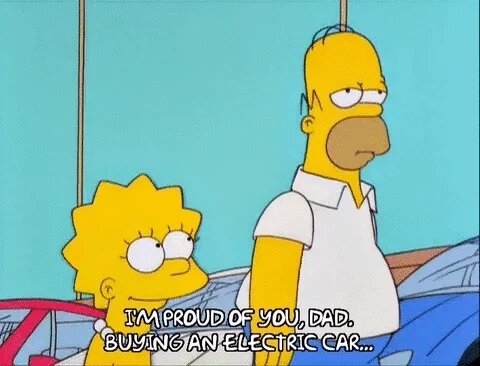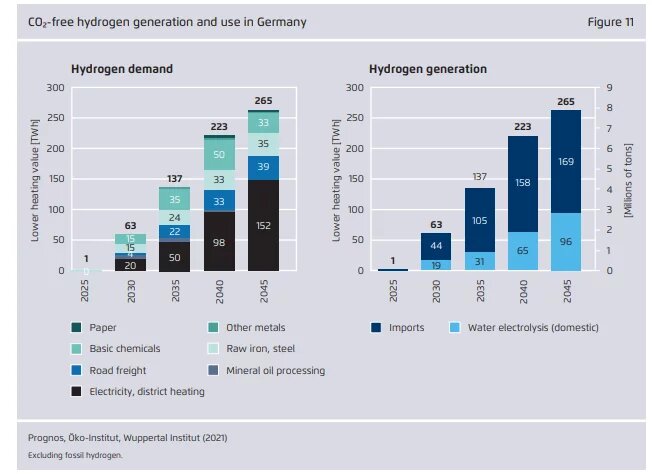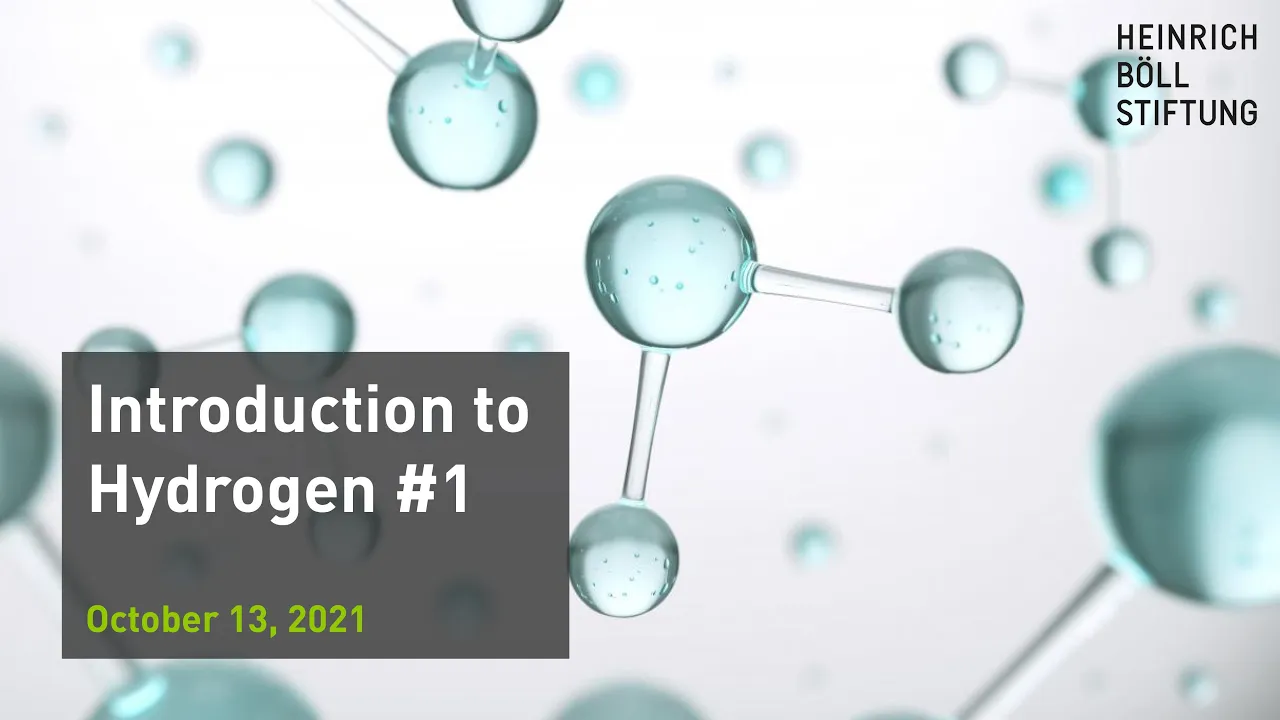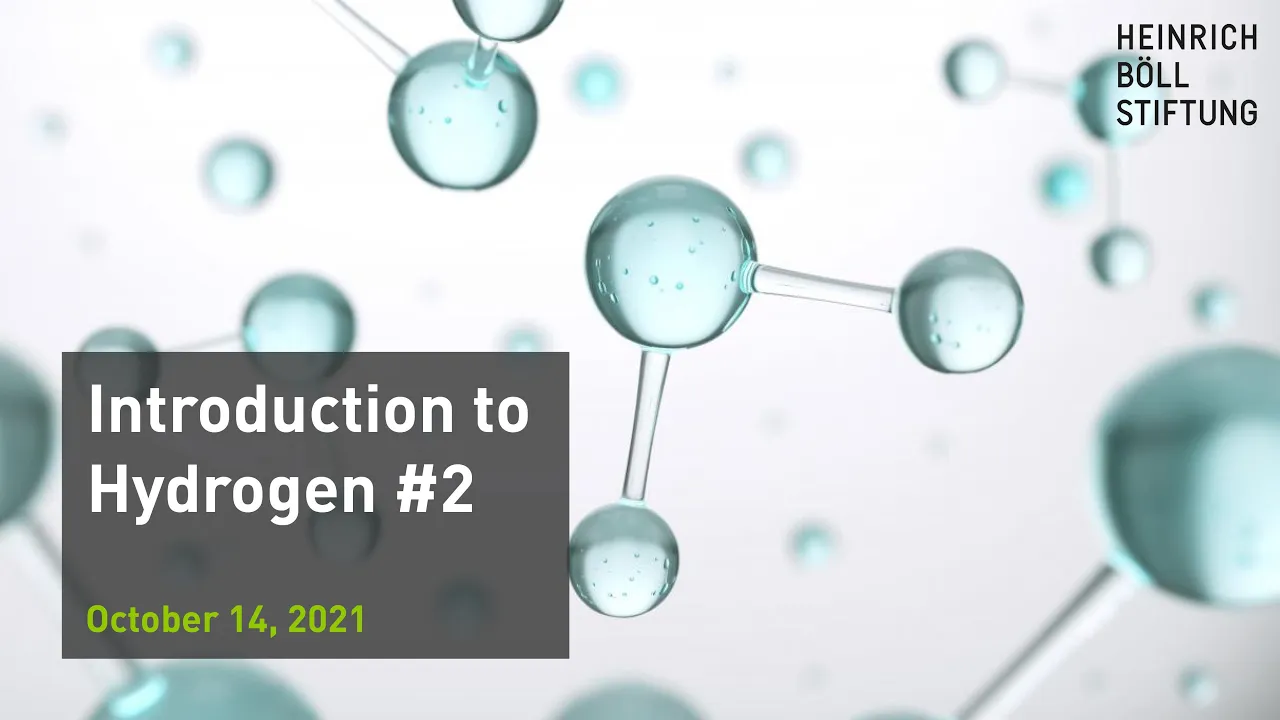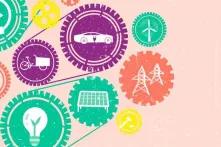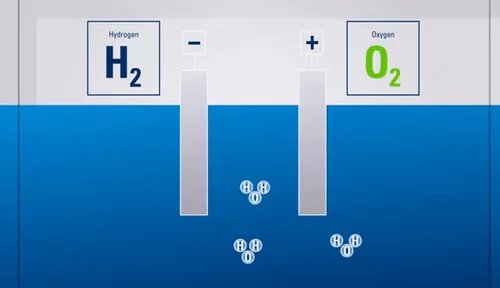
The EU and Germany aim to be climate neutral by 2050 and 2045, respectively. The commitment to climate neutrality means that zero-emission alternatives will replace emissions-intensive processes and products. One energy alternative is climate-friendly hydrogen. However, hydrogen is not an all-purpose miracle that solves everything at once. It is far too expensive and cumbersome to produce for that. In most cases, it is cheaper and more sensible to use ordinary electricity.
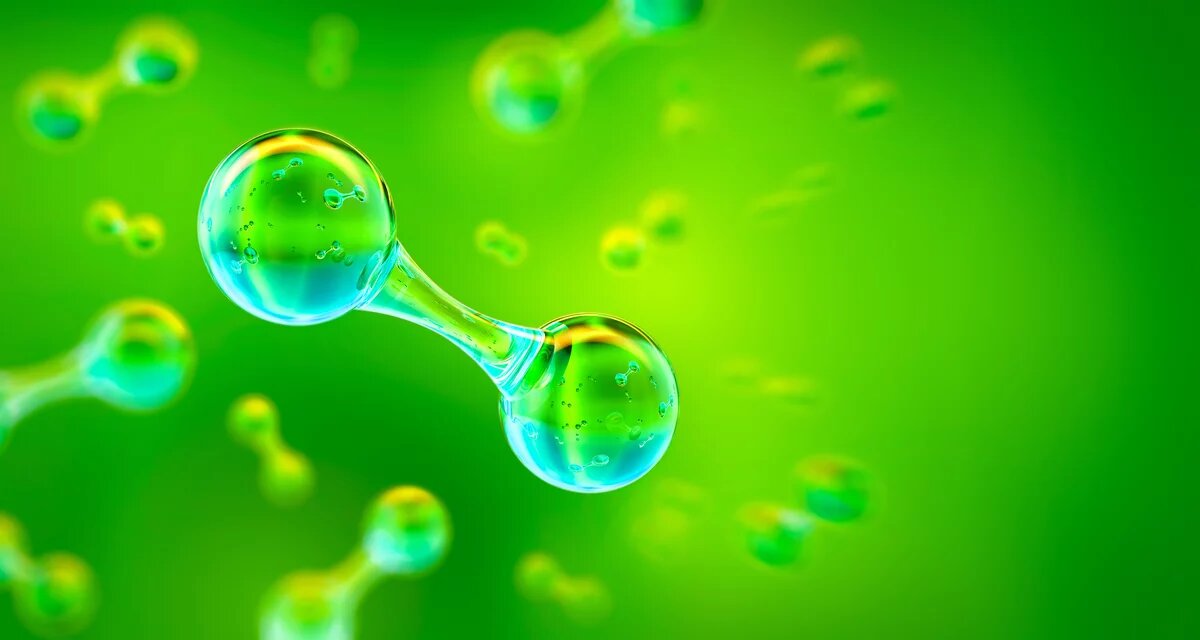
1. What is hydrogen?
Hydrogen is a chemical element with many capabilities. On earth, it hardly ever occurs in its purest form, but has to be extracted from compounds with other elements. This is an energy-intensive process. Hydrogen can be further processed into various downstream products. These include hydrogen-based synthetic energy carriers and so-called "e-fuels" such as methanol, ammonia, synthetic methane, and synthetic fuels.
2. What does hydrogen have to do with climate neutrality?
Hydrogen can help make emission-intensive processes and products emission-free or at least low-emission. Since Germany has to be carbon neutral by 2045, such processes and products are now in high demand. Because industry will need years to make the switch. It's a matter of long-term investment, and in some cases the companies will have to build new plants. In addition, industry is demanding constructive conditions from policymakers. They want to know that it is worthwhile to invest in new, climate-friendly plants and business models.
Hydrogen is one important technology for climate protection. It is misleading to pretend that hydrogen can solve all climate problems and that hydrogen is a miracle technology. After all, there are cheaper alternatives for cutting emissions in many areas. And for economic and technical reasons, hydrogen’s availability will be limited.
3. What does hydrogen have to do with renewably generated electricity?
There is a twofold answer this question:
First: You need renewable energy to produce green hydrogen.
Green hydrogen is obtained through electrolysis. In this process, water (H2O) is split into the components hydrogen (H) and oxygen (O). This splitting process requires green electricity. Some may still remember this from chemistry lessons. It looks something like this:
For electrolysis itself, it doesn't matter whether the electricity comes from a coal-fired power plant or a wind turbine. For climate protection and the preservation of our livelihoods, however, it is requisite that, as a rule, only renewable electricity – primarily from wind and solar power – is used in the production process.
Second: You can store clean electricity in gaseous hydrogen and convert hydrogen back into electricity.
If you produce gaseous hydrogen this gas acts as an electricity storage system. Such storage systems will become important when the share of volatile renewables in the electricity mix is very high.
A lot of energy is always lost in this storage and conversion processes. It is therefore more energy-efficient, and usually cheaper, to use the electricity directly.
The following picture illustrates how renewable generated electricity can be use directly or indirectly
Three steps to make hydrogen a storage system for green power:
- electrolysis with water and renewably generated electricity (Elektrolyse)
- store the gaseous hydrogen (Transport und Speicherung)
- convert hydrogen back into electricity (Rückverstromung)
4. Green and blue: What do the colors mean for hydrogen?
Hydrogen itself doesn't have a color. The colors stand for the processes and raw materials used to produce it. Only green hydrogen produced with renewable energy is virtually emission-free. Of course, emissions can occur during the construction of the plants. However, all plants and building bear this type of “in-built” engery and emissions.
Blue hydrogen, like gray hydrogen, relies on natural gas. Because the CO2 does not (immediately) enter the atmosphere during the production of blue hydrogen, but would be "stored" underground, it is designated as climate-neutral. The designation is controversial, however, because the use of natural gas causes additional emissions. Moreover, there are not, as of yet, plants that can manufacture blue hydrogen on a large scale.
Pink and yellow hydrogen, like green hydrogen, are produced through electricity and electrolysis. The difference lies in the origin of the electricity. Pink hydrogen is produced from nuclear power, while yellow hydrogen is generated from grid electricity: a mix of fossil, renewable, and nuclear power.
5. Why is blue hydrogen controversial?
Even if the lion's share of the CO2 were captured and injected underground after hydrogen production, there would still be the climate-damaging emissions that occur during the extraction and transportation of the natural gas, known as "upstream emissions." The problem is methane, the largest component of natural gas. When methane enters the atmosphere, it is 28 times more harmful to the climate than CO2 over the course of a hundred years. Over 20 years, its effect is 84 times greater than that of CO2. That's why many environmental organizations, among others, are critical of blue hydrogen.
Many experts and large parts of the industry argue that blue hydrogen is needed as an interim solution until there is sufficient green hydrogen. They argue that it is crucial to build hydrogen installations now, for example in the steel industry. They argue that investement cycles last a long time and a lot of (old, hard coal) installations are currently on the verge of a new investment cycle. Hence, the time for investment and developing hydrogen useage in newly built plants would be now. When sufficient green hydrogen becomes available, the switch from blue to green could be made, its advocates argue.
While the German government writes in its official hydrogen strategy that it wants to promote mainly green hydrogen, the EU leaves the door open for blue hydrogen.
6. What role does hydrogen play for climate-neutral industry?
Hydrogen is important for making some key industrial processes climate neutral by 2045. In the chemical industry, green hydrogen can produce green ammonia. Ammonia is an important basic material for the chemical industry, and ammonia synthesis is the most CO2-intensive petrochemical process. Green ammonia would greatly reduce the CO2 footprint of the chemical industry.
Green hydrogen is also a viable alternative to fossil fuels in steel production. Steel is produced in a blast furnace or in a direct reduction plant. In the blast furnace, green hydrogen can replace injection coal. In direct reduction, green hydrogen is used instead of natural gas.
Because it is so expensive and should be reserved for special purposes, hydrogen is sometimes referred to as the "champagne of the energy transition.
7. What about fuel cell cars?
Fuel cell cars are powered by hydrogen. In the short and medium term, fuel cell cars are not an efficient option for mitigating emissions in car transportation. If cars are necessary, then electric cars are better. The overall cost and energy efficiency is better. Most automakers are betting on battery electric powertrains. There are hardly any fuel cell cars on the market, nor is there a refueling infrastructure for hydrogen. This would have to be developed at high cost, which would ultimately jack up consumer prices.
Electrification first" is the motto.
8. And what about synthetic fuels?
For the production of e-fuels, first electrolysis is carried out: water is split into hydrogen and oxygen. By adding CO2, you produce methane. Further chemical processes are then used to obtain the desired fuels. They are chemically identical to conventional gasoline, diesel, or kerosene. That is why they are promoted by those who want to stick with the internal combustion engine. There is only one catch: the production of "green" e-fuels requires a lot of clean electricity. It is much more efficient to use this power directly, for example, in a battery-electric drive. The complex production process and low availability make e-fuels very expensive. Currently, a liter of e-fuels costs 4.50 euros!
If aircrafts are fueled with synthetic kerosene, a downstream product of hydrogen, this can make flying somewhat more climate-friendly. At the same time, it is important to encourage other climate-friendly flight methods, such as building lighter aircraft, optimizing flight routes, etc., as well as complete alternatives to flying, such as train travel.
9. How much hydrogen will Germany need in the future?
In Germany, the demand for hydrogen is currently between 55 and 60 terawatt hours per year. This is mostly gray hydrogen, made from gas and oil. It is very harmful to the climate. It has no place in a climate neutral economy. The following figure shows a scenario for hydrogen demand and generation in line with the goal of climate neutrality by 2045. The scenario envisions a mix of green and blue hydrogen in 2030. By 2045, however, green hydrogen would entirely replace blue hydrogen. Demand for hydrogen and other synthetic fuels and feedstocks would rise steeply between 2030 and 2045.
The demand for (green) hydrogen would exceed the amount that can be produced in Germany itself. Germany is densely populated and the sun does not shine all year round. This limits the capacities for wind power and solar power generation. As a result, two-thirds of the hydrogen needed would have to be imported as early as 2030.
10. What about these hydrogen imports?
Germany and other European states are looking towards African countries for cheap imports. This demand from industrial countries comes with risks and opportunities for developing and export orientated countries.
What are the challenges? For example: Electrolysis requires a lot of clean water. In the sunny countries of the global south, clean water tends to be a scarce resource. You would have to ensure that- despite hydrogen production - there is a safe supply of drinking water for the local people and environment. The same applies to green electricity supplies. Green power plants would have to generate green power for green hydrogen production and for a green local energy system.
So far, there is no binding regulatory framework for (green) hydrogen imports. Germany and Europe therefore have the opportunity to lead the way and use their market power to create strict and verifiable standards. Such a set of rules, combined with tangible sanctions, could help green hydrogen become a truly sustainable, global enterprise: socially just, ecologically compatible, and economically successful. The time for smart regulation is now
Video recording of the "Introduction to Hydrogen #1 - Production and application climate-friendly hydrogen" on October 13, 2021.
Video recording of the "Introduction to Hydrogen #2 - Political framework for climate-friendly hydrogen" on October 14, 2021.

